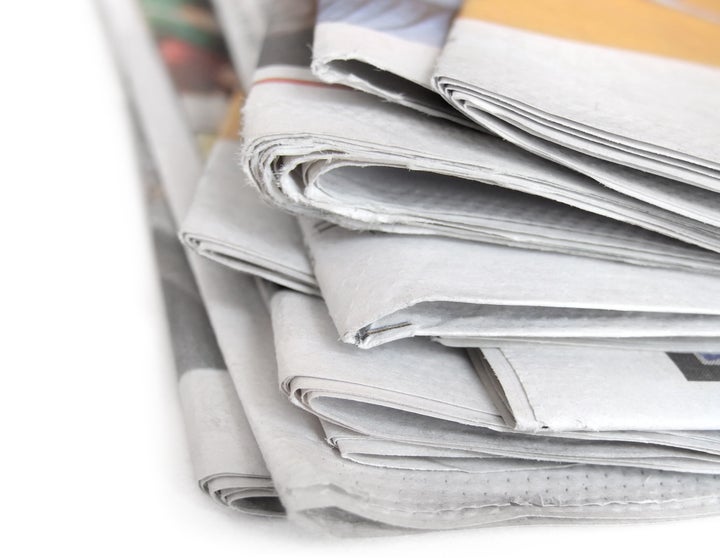
As a high school history and government teacher, I do my best to avoid feeding into partisan humor or offering unsolicited remarks about what politicians say and do. I want students to focus on the learning process, not on what I believe ― though, with this administration, I have grown more open to the idea of sharing my views when asked.
When it comes to teaching journalism and advising the student news site The Gator, however, I have no qualms about expressing my disappointment in President Donald Trump’s treatment of the Fourth Estate, which includes our nation’s most venerable newsrooms.
My budding reporters expressed particular disdain for Trump’s Feb. 17 tweet, which declared, “The FAKE NEWS media (failing @nytimes, @NBCNews, @ABC, @CBS, @CNN) is not my enemy, it is the enemy of the American People!”
My students, many of whom I’d also taught in history classes, knew I wasn’t one to lose my cool ― or become overly partisan. In this instance, though, I found myself unable to hold back my thoughts on what I considered to be dangerous, even unpatriotic statements from the highest office in the land.
Members of our founding generation had their own issues with the press. John Adams signed legislation in 1798 limiting the media’s ability to criticize the president in a move Trump likely would’ve supported (though the decision later went on to blemish his career). Thomas Jefferson had a similarly turbulent relationship with the press.
However, both also acknowledged the media’s centrality to the state. Prior to his presidency, Adams enshrined in the Massachusetts Constitution, adopted in 1780, that, “The liberty of the press is essential to the security of the freedom in a state: it ought not, therefore, to be restrained in this Commonwealth.” And Thomas Jefferson wrote in 1786, while serving as the United States Minister to France (before defeating Adams to become America’s third president), “Our liberty depends on the freedom of the press, and that cannot be limited without being lost.”
It’s no coincidence that the architects of our constitutional republic ― even while feuding with journalists ― enshrined freedom of the press as item No. 1 in the Bill of Rights. Any president who calls the media “fake” makes me question how much he knows about the history of this nation, including the central role the press has played in making America truly great. To repeatedly call the news media “the enemy of the people” angers and disappoints me.
“I found myself unable to hold back my thoughts on what I considered to be dangerous, even unpatriotic statements from the highest office in the land.”
I shared these views with my students, also making plain that The New York Times is neither fake nor disgusting. Does the Times make mistakes? Certainly, as do all outlets. But the nation’s paper-of-record admits errors and does its best to make corrections.
Moreover, contrary to what the president might believe, just because the newspaper’s op-ed section leans left, its news coverage is not somehow thereby contaminated. Reporters there and elsewhere are serious about remaining objective, often working on a different floor of the building than the column and editorial writers — all to avoid accusations of real or perceived bias. Even my young reporters recuse themselves from being involved in any opinion writing about the news they cover.
I want my students to have faith in the news media, and I do my best to cultivate that faith. I accomplish this (I hope) by guiding students through the news-gathering and news-writing processes. Often, my new reporters are sent back to the field to gain another perspective, and editors work with them to hone their writing skills. Before news stories appear live online, copy is seen by at least four staffers ― including me ― to ensure accuracy and fairness. When rookie reporters comment on how much it takes to get a story published, I tell them to think about how journalists at major media outlets feel.
All of this isn’t to say that fake news doesn’t exist. It certainly does, but established media outlets aren’t churning it out. There is a big difference between getting a story wrong and purposely deceiving people, which Trump seems not to understand. Neither is acceptable, but one is far, far worse than the other.
I tell my students I have faith that even if one news outlet occasionally doesn’t hold its own pages and reporters accountable, others certainly will. I’m more concerned about teaching my students to differentiate a credible news organization and sites clearly meant to fool them ― like Alex Jones’s Infowars, which thrives on rumors and propaganda to attract hits and advertising revenue.
As school begins, I urge educators around the country to condemn Trump’s repeated attacks on the media. As for me, I’ll be reminding my own students that negative coverage of the president doesn’t amount to fake news ― that’s just Trump’s thin skin and aversion to scrutiny talking.
David Cutler teaches history, journalism and government at Brimmer and May, an independent PK-12 school in Chestnut Hill, Massachusetts. Follow him on Twitter at @SpinEdu.
